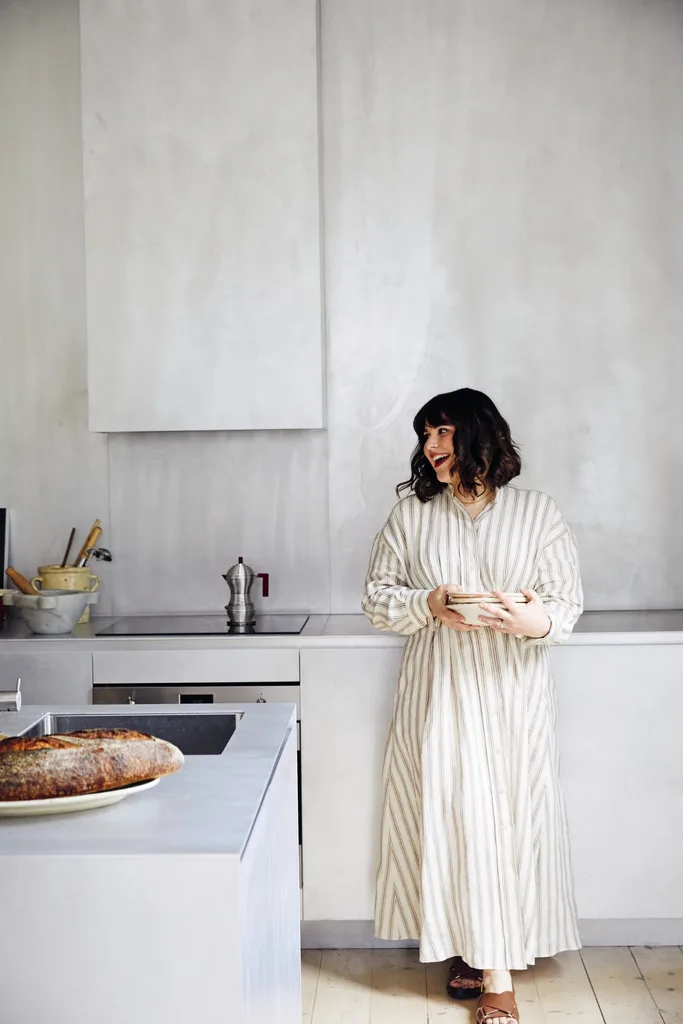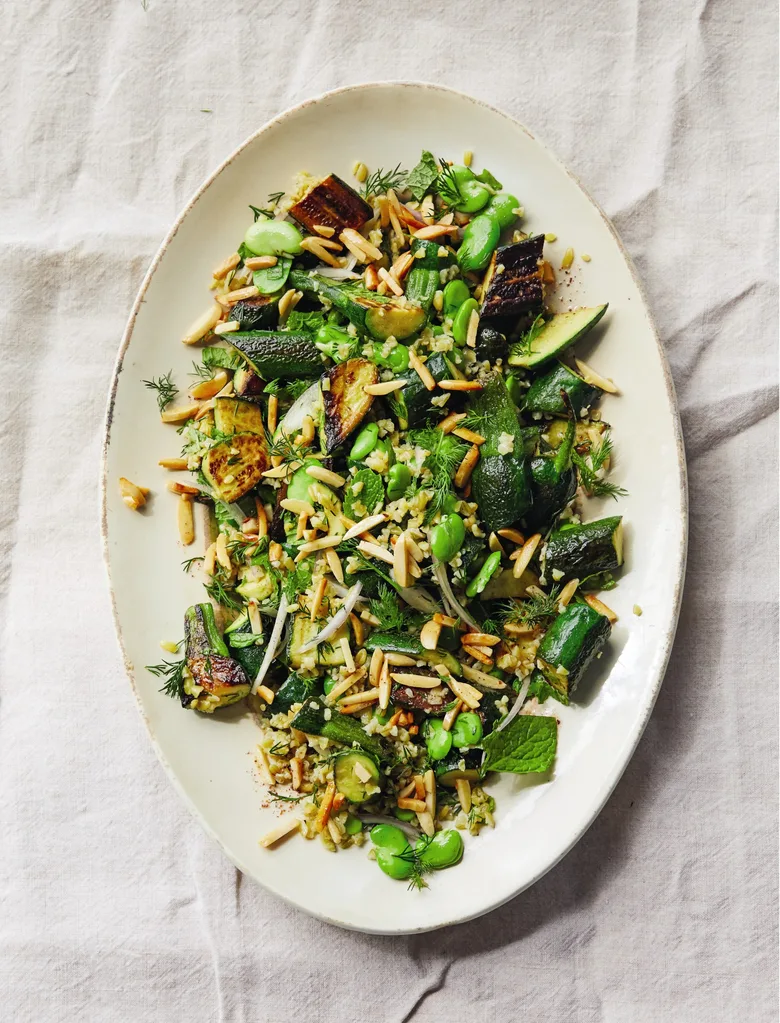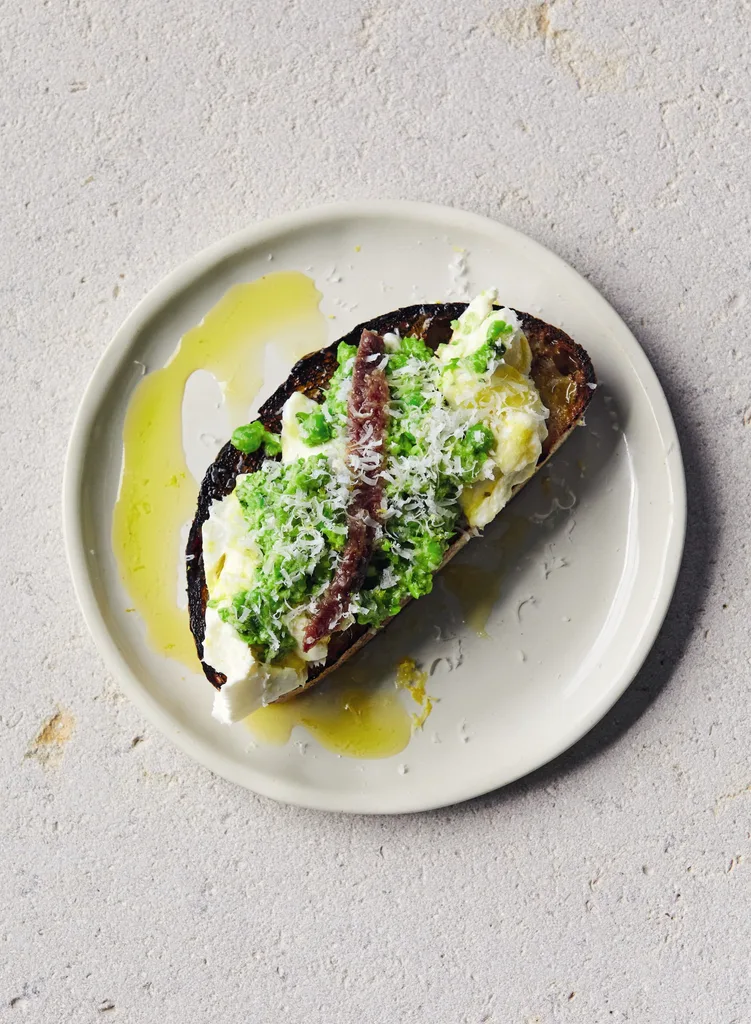Cook and author Julia Busuttil Nishimura is a fixture in the Australian food industry. She’s become known for her ability to make simple, everyday meals into a thing of rich, rustic beauty and mouth-watering deliciousness.
Living in Melbourne with her husband Nori and their two sons, Haruki and Yukito, she’s influenced by her Maltese heritage and time spent living in Tuscany, Italy. For her, it’s all about in-season ingredients and turning every meal into a celebration.
With the release of her fourth cookbook, Good Cooking Every Day, Home Beautiful sat down with Julia to talk about the key to a good meal, her go-to dishes as the weather warms up and the secret to a welcoming setting when entertaining in your home.

What was the inspiration behind this book?
“The inspiration came from the love of creating a pleasurable meal for friends and family. It’s all about good cooking every day, no matter the occasion or time. One of my most asked questions is, ‘What do I put with that?’ So I wanted to share with readers how I like to put food together to make a complete meal – whether it’s a weeknight meal or a special long lunch.”
What’s the key to a good meal in spring?
“The key is really cooking with what is in season. Vegetables like young zucchini and their flowers, broad beans and peas, and spring berries will give you the most delicious start. Spring is such a beautiful time when the anticipation of summer is there, and so leaning into that lightness is always lovely.”

Is there a light dish or salad in the book that you especially love?
“There are so many recipes for the warmer months. One especially lovely for spring is the ‘Zucchini, Broad Bean and Freekeh Salad’. It’s fresh but substantial, and topping it with buttery almonds just takes it to another level. The ‘Charred Eggplant With Roasted Chickpeas and Lemon’ is also a real favourite.”
Apart from food, what’s the secret to a memorable meal as the weather warms up?
“[It] is all about how a moment makes you feel. The food has a lot to do with that, but other things can make a meal memorable. I really like to pick interesting crockery and glassware, which often sparks conversations of travel around the table. And as the weather warms up, it’s a great opportunity to change the way we eat. Perhaps it’s grilling something outside or taking your meal to the local park which creates a memorable occasion. At the end of it all though, it’s the company and connection around the table which makes a meal the most memorable.”

How do you create a welcoming setting for visiting friends or family?
“I think keeping things relaxed is always a great way. For me, that’s a nice linen on the table, some garden flowers in small vases and the plates and cutlery stacked in the middle of that table. Involving your friends or family in some of the finishing touches of the meal is a really nice way to help everyone feel comfortable too. I also like to ensure I have a snack ready to go when people arrive – it means people have something to do and I don’t feel the pressure to have everything ready.”
What three kitchen utensils, gadgets or appliances are you loving right now?
“My mortar and pestle is my best friend. I have an Italian Carrara marble one and I love it so much. A microplane is a non-negotiable in my kitchen – essential for lemon zesting, and grating cheese and nutmeg. One that I love, especially in spring, is a puntarelle cutter. I use it for cutting puntarelle (a type of chicory) in winter, but in spring and summer I use it for julienning zucchini and asparagus for pasta.”

If you could only eat one thing every day in spring, what would it be?
“A beautiful Maltese spring soup called Kusksu. It has broad beans, peas and a small pasta cooked in a light tomato broth. Lots of garlic and parsley and served with a soft cheese called Ġbejniet, which is placed into the soup. It’s comforting and nostalgic and just so delicious.”
‘Good Cooking Every Day’ by Julia Busuttil Nishimura, $44.99, is out September 2024. Visit Pan Macmillan Australia.

This article originally appeared on Home Beautiful and is republished here with permission.







